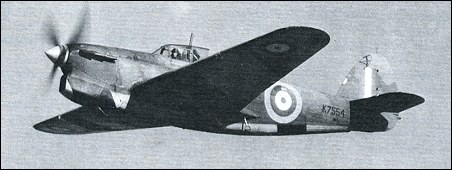
In 1942 problems began manifesting among the RAAF's Hawker Tornadoes. A weak rear fuselage and engine problems with the RR Vulture lead to the grounding of the fleet twice in the year. In the meantime the Hawker Hurricanes and Henleys where getting long in the tooth and obsolescent. As a result the RAAF began looking for a replacement for all three in the ground-attack fighter-bomber role. The RAAF had liked the performance of the Tornado, and liked the Centaurus engine on the Bristol Buckinghams. In therefore approached Hawker in 1943 with a request for a new aircraft based on the new Tempest fuselage but using the Tornado/Typhoon wing (for superior takeoff/landing and low speed performance ) and the Centaurus engine.
In 1943 Australia ordered 150 of a new ground-attack variant of the Tempest to replace the RAAF’s Hurricanes, Typhoons and Henleys. The wing of the Typhoon is married with the fuselage of the Tempest and a Bristol Centaurus radial engine fitted. The first prototype flew in May 1943 and deliveries from Armstrong Whitworth began during the summer of 1944.
Dimensions; 41.7/ 34.5/ 14.6/ 283 sq ft; 1x 2,470hp Bristol Centaurus VIII; max speed 417mph at 19,000ft; range 620 miles (internal fuel) and 1,500 miles (with drop tanks); loaded weight 11,800lbs; MTOW 13,640lbs; rate of climb 3,920 ft/min and service ceiling 35,200ft. Armament: 4x
20mm Orkileon FFB cannon and 2x 500-1,000lb bombs or 8x 3in RPs or 2x 40mm Vikckers 'S' gun pods underwing. Two 45 or 90 gallon drop tanks or two supply canisters can also be fitted instead of bombs.




